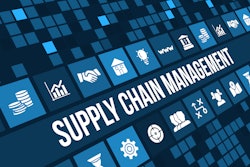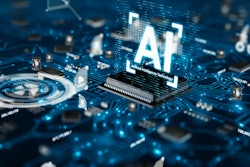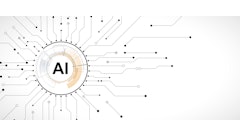
Strategic procurement serves as a major value driver for supply chains by procuring the supplies needed for operations at a price that allows the organization to remain profitable. But as procurement becomes more complicated with increasing numbers of suppliers around the world, market fluctuations, political shifts, and supply chain disruptions, delivering that value is becoming increasingly difficult. As prices rise, budgets are stretched thinner. As contracts and other paperwork change, time must be devoted to updating those rather than focusing on long-term value. Procurement professionals need a partner in value to help them achieve and surpass goals. Generative artificial intelligence (Gen AI) is fast becoming that partner.
While human procurement professionals still excel at the human side of procurement —like supplier relationship management and creative problem-solving — Gen AI serves as the technical partner. It can accomplish the more mundane and technical procurement tasks more quickly and with higher accuracy. Gen AI also can dive through large pools of data to find trends and actionable insights that in turn enable procurement professionals to make informed decisions.
How procurement and AI are teaming up to deliver greater value
Gen AI already is making valuable contributions to procurement in the following four areas:
1. Contract management: Executed contracts typically are stored in repositories with limited metadata fields, which makes it hard to quickly find specific information with just a basic search. Instead, AI can scan pages and pages of text to find the relevant data points. For example, one European company used generative AI to find its contracts that had General Data Protection Regulation clauses. The AI platform allowed the company to filter agreements by geography, category, or contract type, which helped them ensure compliance and reduced what was once a time-consuming manual review process to mere minutes. Taking this a step further, Gen AI’s large-language models can not only help find clauses that need to be updated but suggest text that better aligns with the current situation.
2. Invoice processing: Manual invoice processing also is time consuming and leaves plenty of room for error. Some professional services invoices can have hundreds of line items, which can be difficult to check in detail before approval. Generative AI can extract rate tables and verify details against contract terms to find any discrepancies and prevent the company from paying for items or services that were not ordered. The technology also can detect payment term variances that can impact cash flow. One company found that 1 percent of spend was paid early because of invoice discrepancies. AI can reconcile terms in real time, eliminating costly errors that previously required post-payment audits and supplier negotiations. To help with the negotiations, generative AI also can help draft emails explaining the issue and requesting corrective actions.
3. Spend analytics: Generative AI tools can extract line-item details from invoices and payment documents, enabling precise categorization of spend. This allows organizations to isolate charges such as freight, taxes, and overhead fees, unlocking deeper savings opportunities. In addition, some companies are using generative AI to analyze years of spend and usage data to find usage patterns and identify opportunities for volume discounts or long-term capacity commitments.
4. Category management: By analyzing line-item data, as in other use cases, generative AI can identify deeper insight into purchasing behaviors and supplier relationships. With line-item-level insights, category managers can better track the precise quantities purchased and use this information for data-driven negotiations and control maverick spending. For example, if a company has negotiated discounts for PCs with one supplier and office supplies with another, generative AI can flag when peripherals are mistakenly bought at full price from the wrong or less optimal supplier. In the past, such mistakes would often be caught by manual spot audits, but generative AI can flag this as fast as real time to ensure spending happens within preferred supplier agreements. At the same time, generative AI can review past category plans, spend profiles, and sourcing databases to recommend category strategies, drastically reducing the amount of time it takes to plan, giving companies more time to execute and reap the benefits.
Connecting the dots across disjointed systems
Gen AI also is helping procurement organizations solve their applications challenges. Some companies choose to use different best-of-breed systems to accomplish each of the various procurement tasks, including buying supplies and components, forecasting, managing payment and delivery schedules, budgeting, and more. While this enables efficiencies in each area, it also results in information silos among the different programs. On the other hand, multi-functional enterprise software may deliver outstanding support in some but not all areas. And switching from multiple systems into one enterprise system is complex and challenging, with disruptions and decreases in efficiency in certain areas.
Gen AI solves this problem by seamlessly connecting patchwork systems without sacrificing any best-in-class functionality. For example, one organization was struggling to reconcile legal invoices against contractually agreed hourly rates, both stored in different systems. The method of manual spot audits often missed errors. Gen AI can align contract, invoice, and system payment terms and reconcile all line items against contractual terms, flagging discrepancies instantly. Now with the help of generative AI, the company is able to ensure timely and accurate payments and improve cashflow management.
A smarter, more human-centered future for procurement
With AI’s capabilities to handle so many tasks, from IT management to technical tasks to even simple communication, professionals might be wondering what’s left for them to do. While AI certainly will change the role of humans in procurement, the goal is to make those roles more fulfilling and give professionals opportunities to upskill. Forecasts indicate that by 2030, automation and generative AI will drive 12 million work transitions from low-wage to high-wage jobs that demand more knowledge and skill.
With AI, procurement professionals no longer need to comb through thousands of contracts to check for certain clauses and make updates. They, in a sense, instead take on the manager role and oversee the AI doing the menial tasks. The general recommendation is to implement AI from the bottom up, leveraging AI for automatable tasks to allow for manageable implementation and iterative improvements. Gen AI excels at pattern recognition and data-driven insights, so it makes sense to implement the technology there. But it still has limitations in handling novel challenges, which means humans are still needed for complex decision-making.
With Gen AI as a partner, procurement professionals have more time to do what humans do best: build relationships. Building supplier relationships is a large part of the value procurement delivers. Procurement professionals work with their suppliers to build mutually beneficial relationships that ensure both business and supply. When so much of the mundane work is handled by AI, procurement professionals can do so much more for their organizations.



















